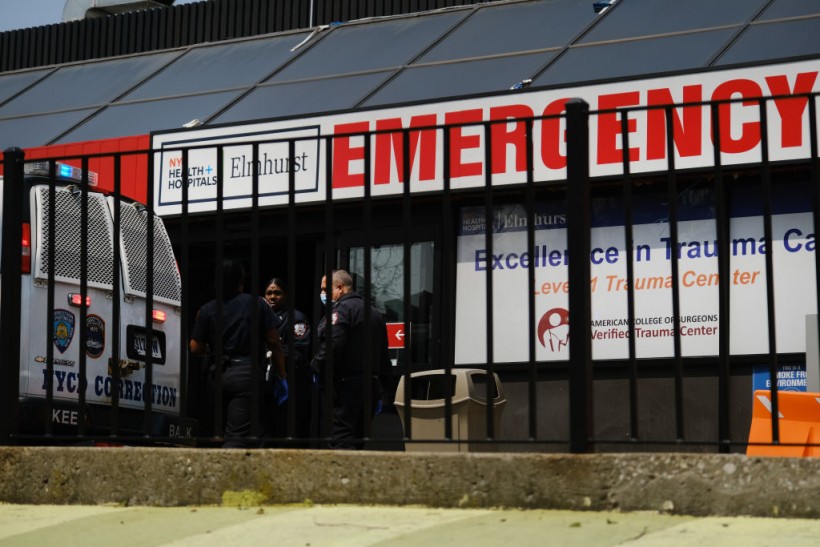The JN.1 variant is quickly becoming the most common COVID-19 strain in the United States, according to latest data.
The severity of the outbreak is shown by the Centers for Disease Control and Prevention's (CDC) most current statistics, which show that JN.1 is responsible for around 44.2% of all COVID cases that have been recorded as of December 22, representing a significant increase above prior estimates, as reported by USA Today.
The JN.1 variant accounts for 57% of cases in the Northeast, where it is prevalent in New Jersey and New York. In Arizona, California, and Nevada, 41% of cases are attributable to JN.1, whereas in Maryland, Pennsylvania, Virginia, and West Virginia, 39% of COVID-19 infections are linked to the variant.

People walk by the entrance to Elmhurst Hospital Center in Queens, which witnessed some of the highest number of COVID-19 cases and deaths in the city on May 11, 2023, in New York City.
The Holidays Make the JN.1 Spread Worse
JN.1 incidence rises as COVID-19, influenza, and RSV immunization rates fall. In response to this troubling trend, the CDC issued health advice last week. The alert cautioned that poor vaccination rates against these viruses might worsen sickness and strain healthcare resources in the following weeks.
Because JN.1 is thought to be more transmissible or to have a greater capacity to elude the immune system than other circulating variations, the holidays add to the complexity of the situation. According to CDC research published on December 22, the rapid spread of JN.1 this month suggests it may be more transmissible.
The CDC emphasizes that COVID remains a severe public health danger, especially for high-risk populations like older adults, newborns, people with impaired immune systems, people with chronic medical illnesses, and pregnant people, despite the possibility of milder instances overall.
Fortunately, most of the time, JN.1 does not seem to produce a serious illness. Nevertheless, those infected with the variation may present with the usual COVID-19 symptoms, such as fever, body pains, coughing, and exhaustion.
Improving ventilation can help reduce the risk of #COVID19 spreading at your holiday gatherings. You can keep windows open, use exhaust fans, and use air purifiers. You could also consider moving activities outdoors. #PublicHealth
— CDC (@CDCgov) December 28, 2023
Find more tips here: https://t.co/aGOBDegU2s pic.twitter.com/9FC9CzA2ID
Read Also: Asthma Drug Xolair Shows Promise in Protecting Against Severe Food Allergies: Study
Low Risk of Severe COVID-19
Positively, preliminary data suggests that the revised COVID vaccinations, which were made available in September, produce antibodies that are effective against JN.1. Although there may not be as strong an antibody response against JN.1 as there was against the previously targeted variant XBB.1.5, medical professionals still expect a lower chance of serious consequences, according to The New York Times.
Notably, hospitalizations related to COVID-19 increased by 10%, from 23,000 the week before to slightly under 26,000 for the week ending December 10, per US News & World Report. These numbers remain well below the highest points recorded during the tripledemic that occurred last winter, which included simultaneous spikes in COVID-19, flu, and RSV cases.
Experts continue to stress the vital significance of preventative actions in light of the changing circumstances. These include using masks, enhancing interior ventilation, keeping at home when ill, and making sure that COVID-19 immunizations are current.
Moreover, researchers predict JN.1 will be the predominant COVID variant until spring. Hence, immunocompromised people, those over 65, those with underlying medical conditions, and anyone visiting vulnerable loved ones still require vaccines.
Related Article: Understanding JN.1: The Latest Omicron Subvariant Adding to COVID-19 Worries










